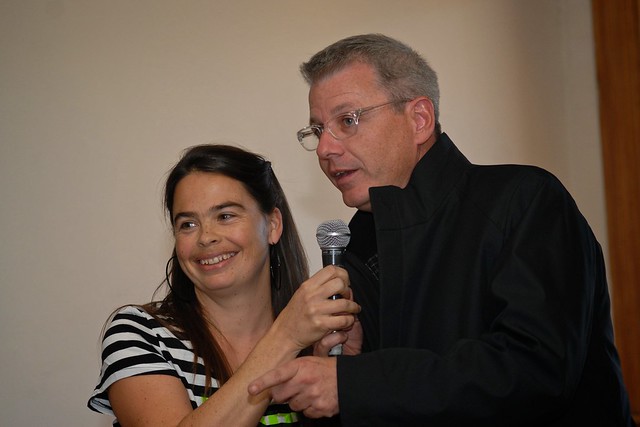

This new, regular online series will feature interviews with fascinating and influential urban thinkers, with a focus on discussing how Toronto can become a more engaged, accessible, sustainable city.
![]()
The YIMBY festival, organized by Christina Zeidler, is now in its 4th year. The annual event, held in intimate confines of the Gladstone Hotel, attempts to bring together politicians and local community groups in a spirit of co-operation. More than 30 neighbourhood and resident groups set up information displays so that activists can share with local politicians their visions for their respective communities. Spacing talked to Zeidler, a former community activist, about YIMBY and about engaging communities in the development and planning process.
Spacing: What is the core vision for YIMBY?
Zeidler: YIMBYism is a community mindset that’s open to change and development. At its core, YIMBYism has a steering vision that comes about when communities and planners engage with one another. Unlike NIMBYism, it’s not just a knee jerk reaction and not a big “no!” to development. People bring visuals to YIMBY, people are proposing ideas, and they’re displaying potential neighbourhood projects. It’s all about getting residents involved and making them feel involved in the planning and development process.
Spacing: How did your experience as community organizer with the Parkdale resident’s group, Active 18, influence you to establish the YIMBY festival?
Zeidler: Through Active 18, which was against a lack of consultation in Parkdale, I came to realize that sharing information was powerful. What I hear at YIMBY all the time from neighbourhood groups is: “We don’t know what to do!” In the past we’ve had groups come that aren’t even groups yet but just two people who got together trying to figure out what’s going on in their neighbourhood. This year Church and Wellesley came for the very first time because they are facing a very similar development issue to Active 18. Their group is in its infancy and they were at YIMBY just to get information from people.
One of the other big lessons we learned through Active 18 was that communities have a lot of professional knowledge and ability. The goal should be to be proactive and put your vision out there, visually if possible. Communities have the power to be visual especially when you’ve got architects and designers who live in your community. So we worked a lot on creating a solid “YES vision” and articulating what the vision looks like. That’s really what YIMBYs are doing. They’re not looking at the neighbourhoods and saying “no, no, no.” Instead they have a great vision of what their neighbourhood should be. It’s coming to a place where you don’t have to be in fight mode all the time. You’re in a place where you begin showing other people, especially politicians and developers, your vision for what the neighbourhood could be in the future.
Spacing: Presently developers don’t attend YIMBY. Would you ever consider expanding the YIMBY festival to include the development industry and do you think they would be interested in getting involved?
Zeidler: Of course, I think some companies would be interested. There are smart developers out there who do properly engage the community before they begin their work. It’s in the best interest of both YIMBY groups and developers to be able to engage with one another in a casual, social atmosphere. It would allow community groups to make direct connections with developers and open the lines of communication. YIMBY would allow developers to enter into the process in a significant way and not just in the present seducer mode where they show up with their plans at community meetings under a pretense of community engagement.
Spacing: Are standard community meetings effective in terms of what they intend to accomplish or are more alternative forums necessary?
Zeidler: Absolutely more alternative forums, like YIMBY. I see community meetings as just rage-a-thons. Developers and politicians come to the community at the point where a lot of decisions have already been made. The meetings are just an opportunity for everything to boil over because there is very little the community can do from that point on, except maybe go to the OMB and other more radical steps. But if community engagement is taken at an earlier stage, things will turn out differently. Certainly a huge message in all of this is that those community meetings create NIMBYs. The ethos of them is that the developer usually comes in announces what they are going to do. True community engagement is the exact opposite. Community groups are pro-development and what YIMBY is trying to do is to encourage them to come up with a YES vision which is inclusive and represents what their community has in mind for the future. Developers and politicians can then respond to that vision and together, with the community, be “in the circle.”
photo by Stephanie Cloutier



